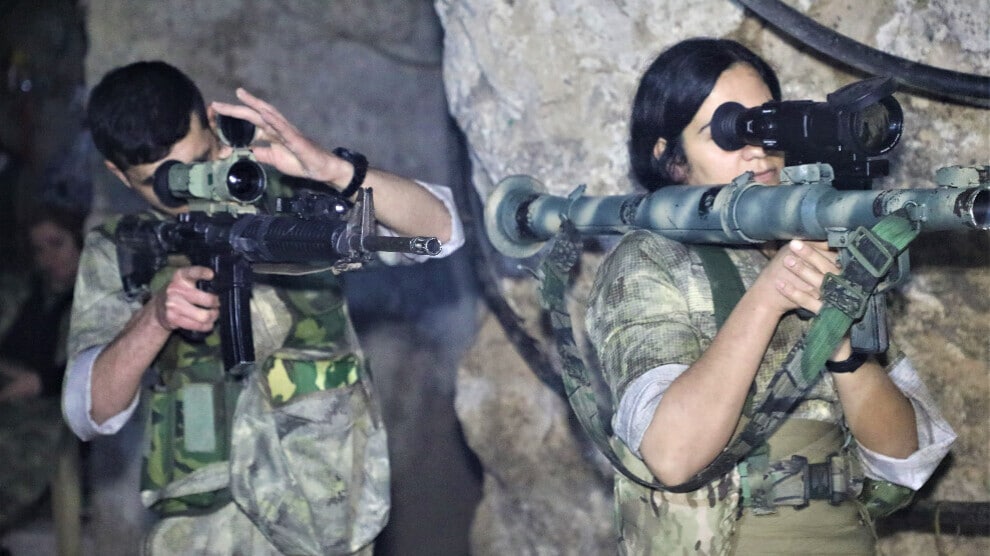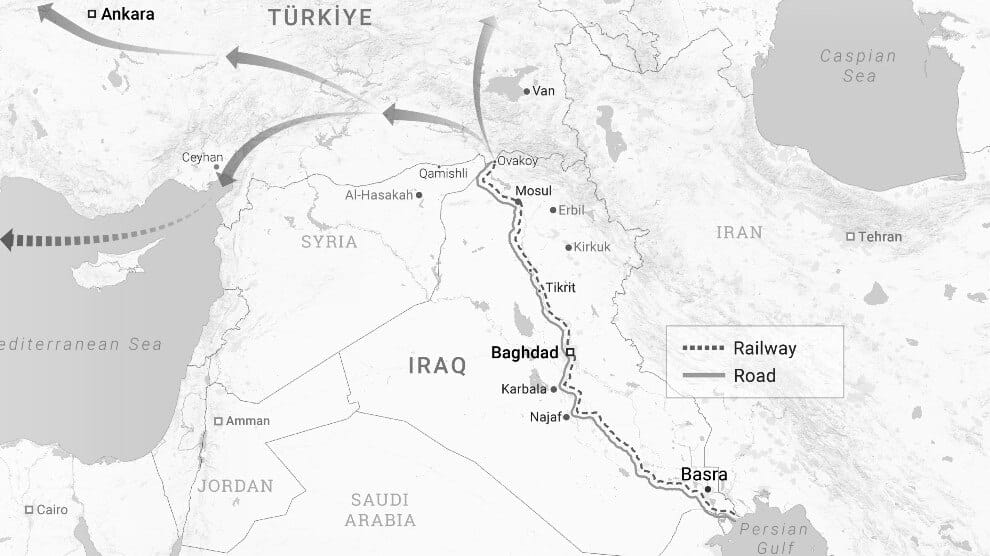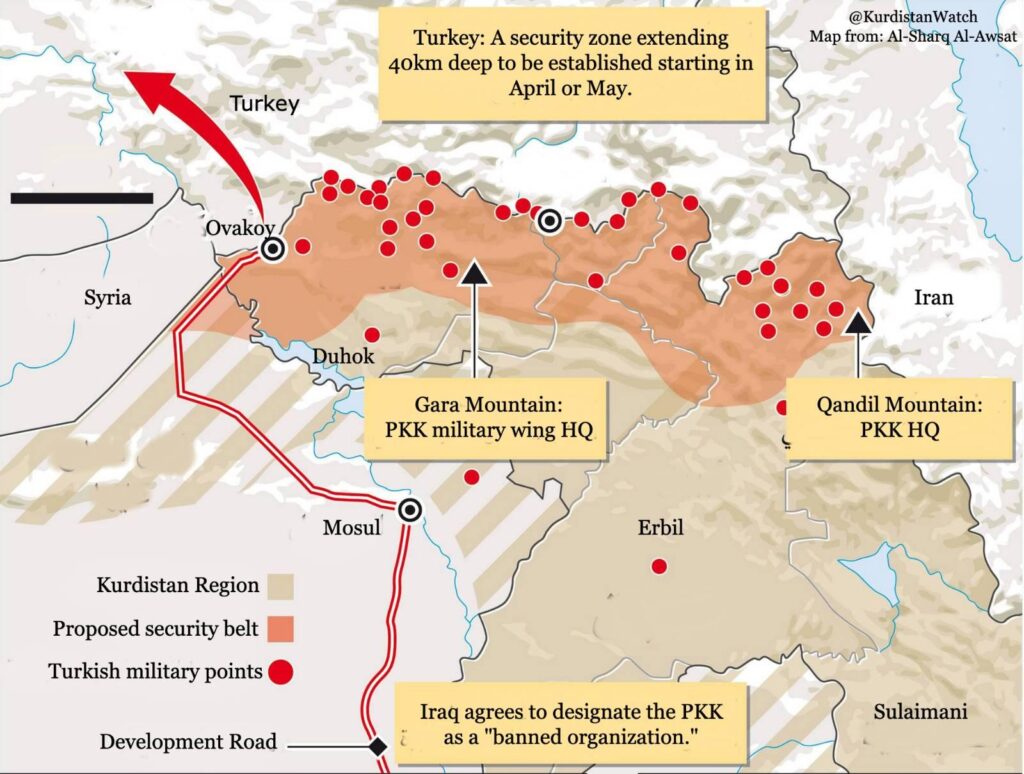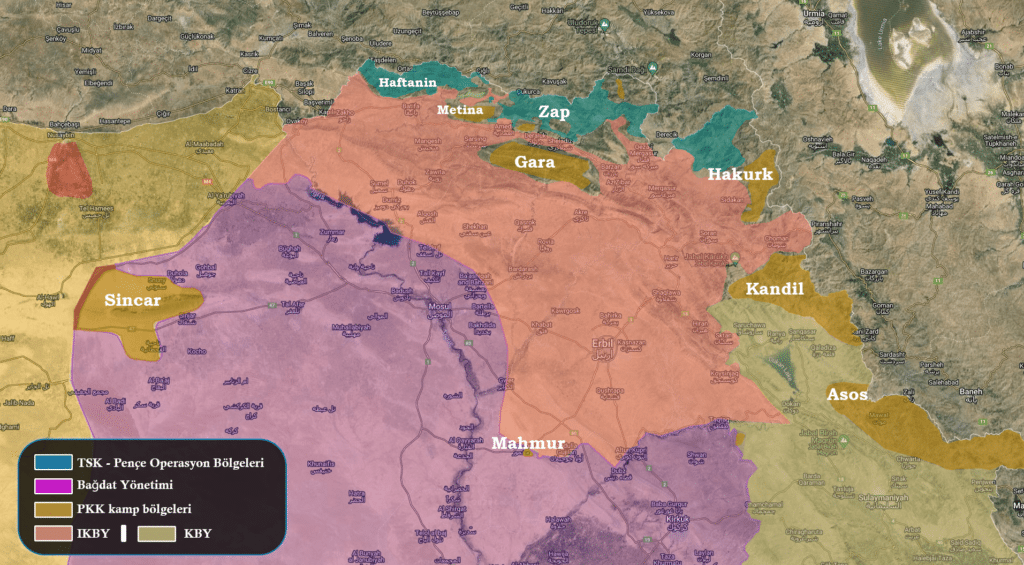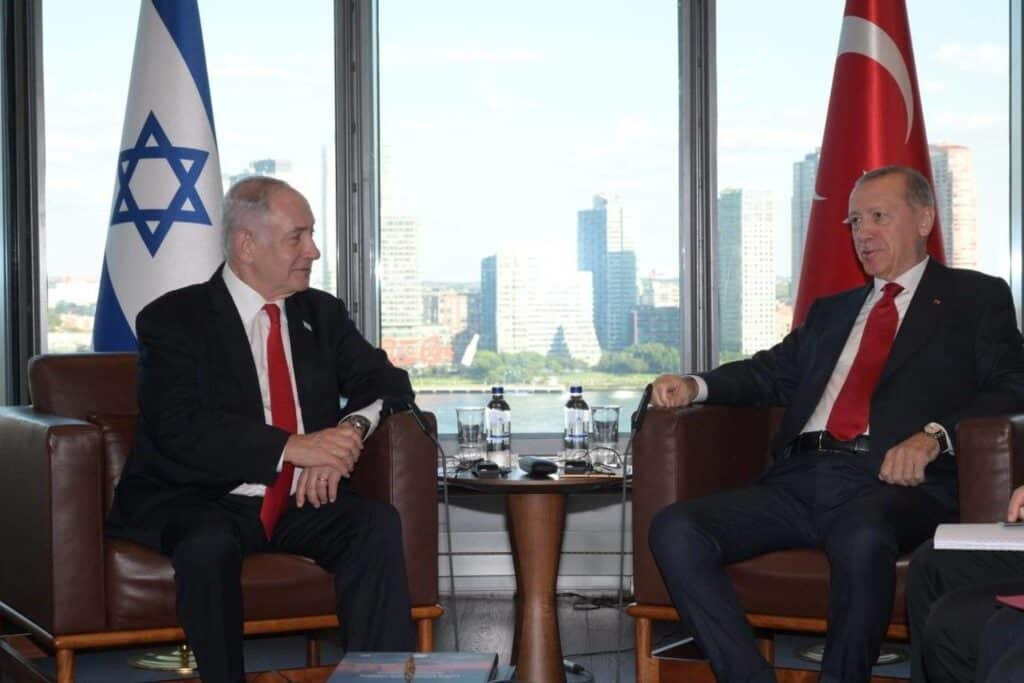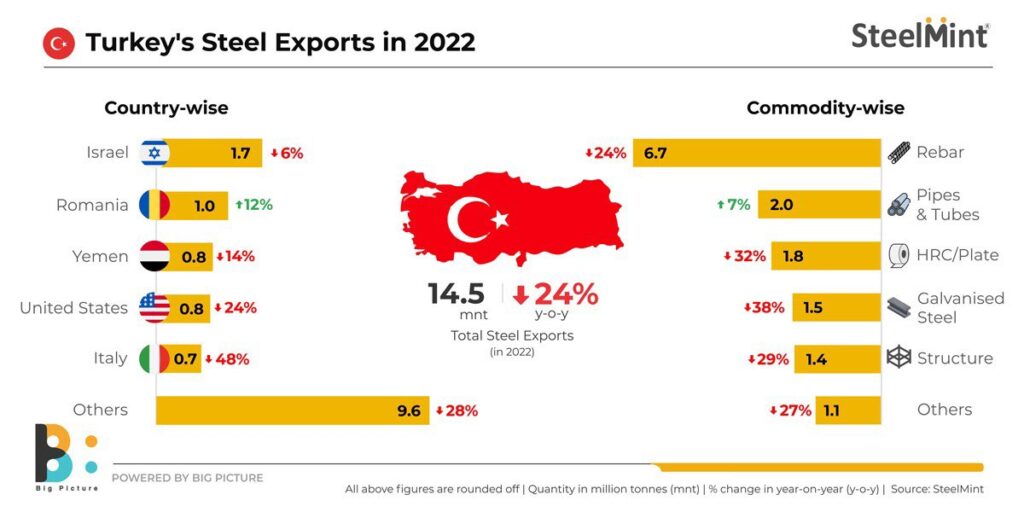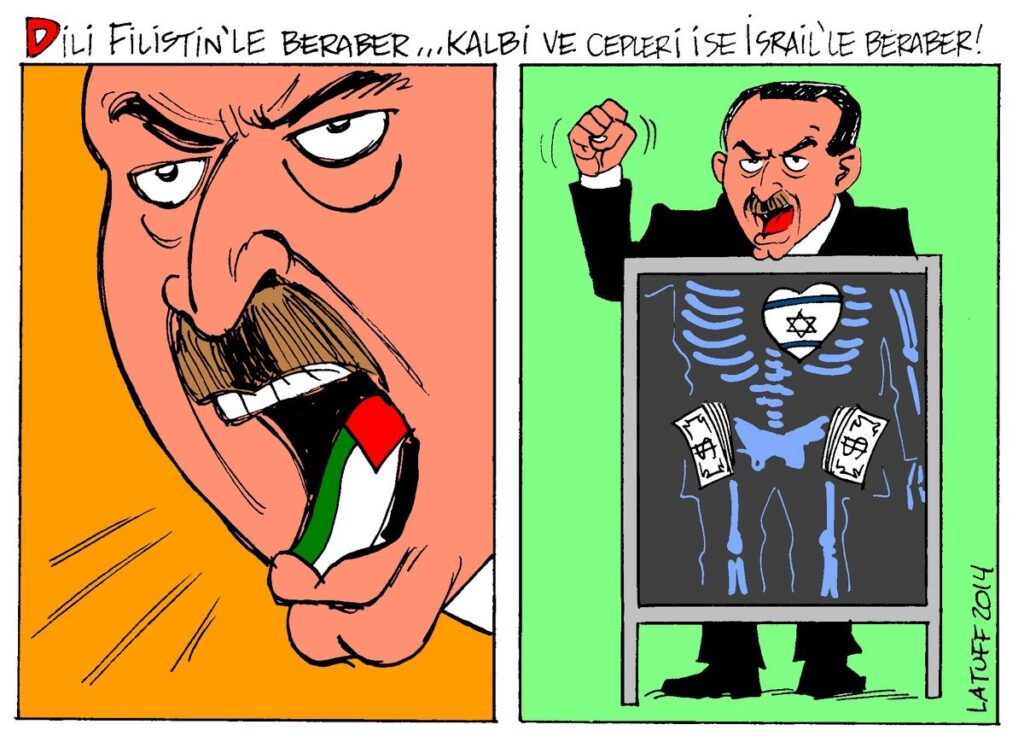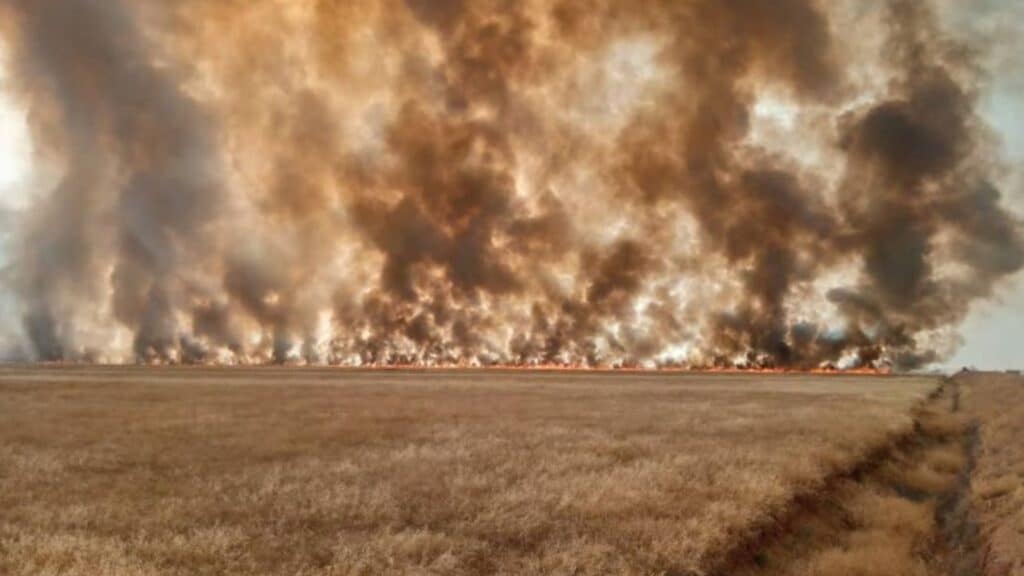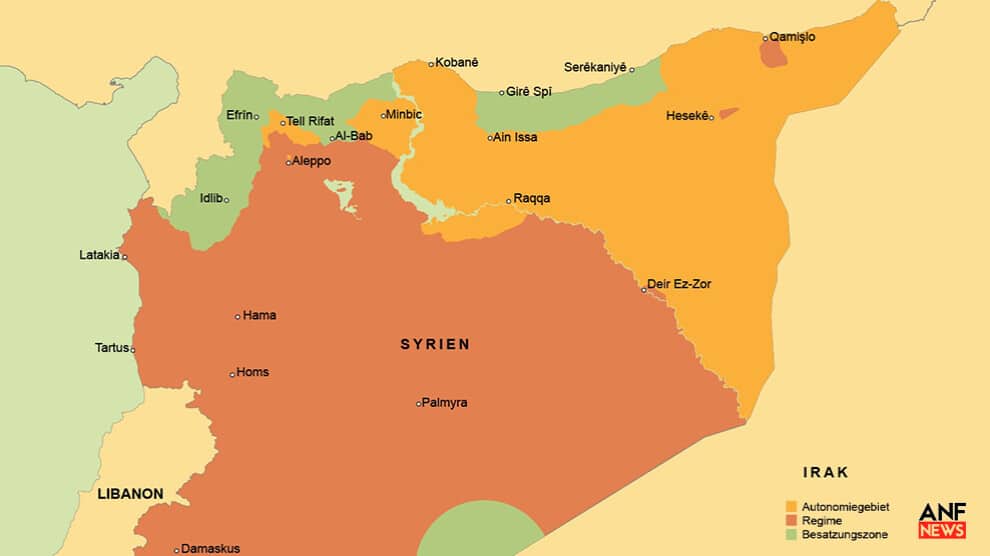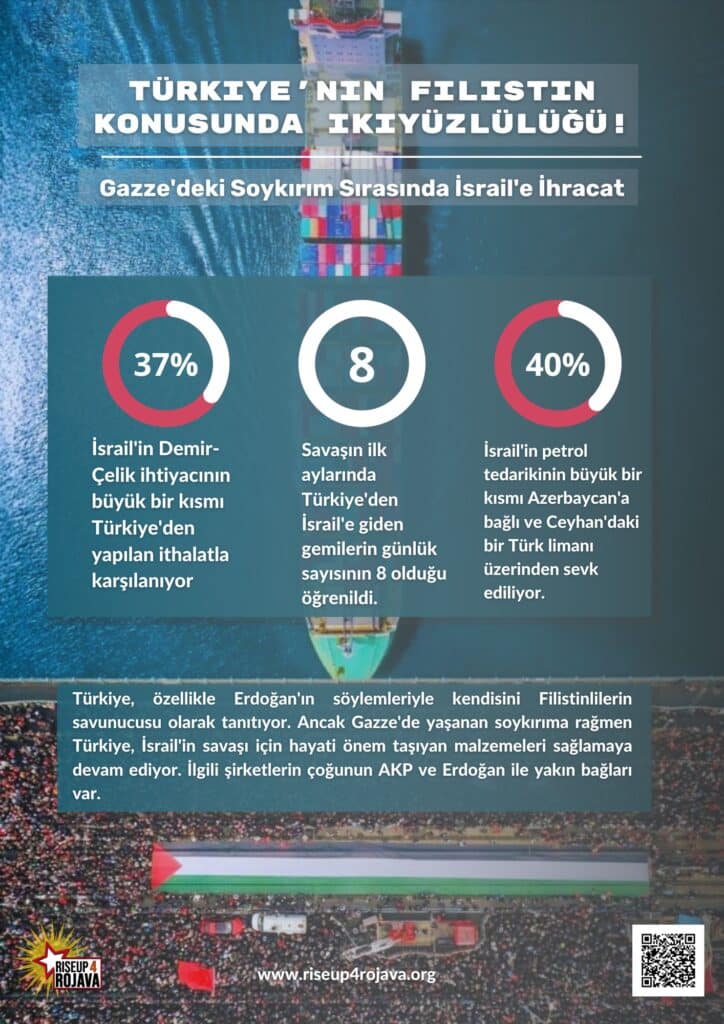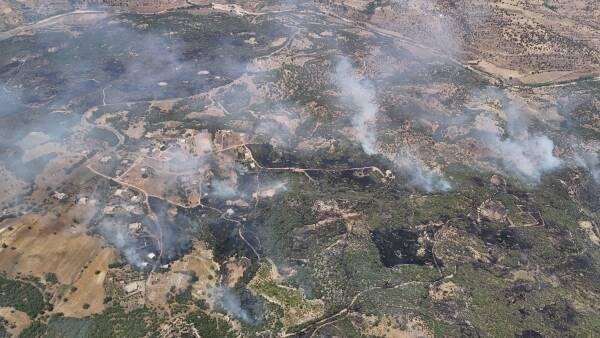
Evaluation de l’offensive turque
et de la résistance de la guérilla au Sud-Kurdistan
11.07.2024
Autres langues: Greek – English
Depuis le 15 juin, l’armée turque a étendu ses opérations dans les régions où se trouve la guérilla du PKK, au nord de l’Irak et a lancé une nouvelle offensive dans le sud du Kurdistan. Depuis le 15 juin, des centaines de véhicules blindés, de chars, de véhicules de transport de troupes, des milliers de soldats et d’autres équipements lourds ont franchi la frontière avec le nord de l’Irak et ont été stationnés dans les zones de guérilla. Rien qu’entre le 22 et le 25 juin, des sources locales ont indiqué que plus de 300 véhicules blindés avaient franchi la frontière et progressé dans la région. Plus d’un millier de soldats auraient été déployés au cours de ces journées, venant s’ajouter aux dizaines de milliers de soldats déjà stationnés dans la région.
Depuis le début de l’offensive de l’armée turque, des affrontements intenses ont eu lieu entre la guérilla et les forces d’occupation turques, notamment dans la région de Metîna, dans la province de Duhok, au nord de l’Irak. L’armée turque a tenté de s’emparer de collines stratégiques et a progressé non seulement dans les régions montagneuses, mais aussi dans les villages et les petites villes de la région. Des images de convois de l’armée turque ont été rapportées de villes comme Amediyê, qui compte plusieurs milliers d’habitants. Dans les villages de la région de Metîna, l’armée turque a mis en place des points de contrôle et procède depuis plusieurs semaines à des vérifications de passeports en toute illégalité, à 35 kilomètres de la frontière irakienne, contrôlant ainsi les citoyens irakiens.
Metina attaquée : Le début de l’offensive estivale de grande envergure est-il arrivé ?
L’offensive au Sud-Kurdistan n’est pas une petite opération tactique ou une simple manœuvre pour déplacer des forces d’un point A à un point B. Elle marque le début de l’offensive d’été prévue par le mouvement de libération kurde depuis le mois d’avril de cette année. Dès la mi-avril, les forces de défense populaires ont signalé que l’armée turque positionnait lentement ses forces et déplaçait davantage de troupes à travers la frontière. De l’autre côté, dans le territoire du Nord-Kurdistan occupé par la Turquie, des forces étaient également rassemblées. Il a été dit que ce qui a commencé en avril n’était pas l’offensive attendue, mais que l’attaque majeure aurait lieu à l’été. Il semble que cette offensive ait commencé avec les nouvelles opérations de l’armée turque dans la région.
Les opérations de l’armée turque se concentrent particulièrement sur la région de Metina, qui est fortement contestée depuis 2022 et qui est le théâtre d’intenses combats entre l’armée turque et les forces de guérilla des Forces de Défense du Peuple et des Unités Féminines Libres, de la YJA Star et du HPG. Malgré deux années d’offensives militaires turques et de bombardements continus, il y a encore des zones à Metîna où la guérilla, principalement à partir de tunnels de guerre, a maintenu ses positions et continue de résister à l’avancée turque. L’armée turque tente à présent de prendre le contrôle de ces zones et d’avancer en force dans la région. Les points de contrôle, les bases nouvellement établies le long des routes stratégiques et les troupes déployées dans ces positions visent à encercler les forces de guérilla dans les zones restantes de Metîna et à empêcher le soutien extérieur d’atteindre la région. Il s’agit d’une tentative de l’armée turque d’étouffer la résistance de la guérilla.
La résistance de la guérilla : Une nouvelle offensive tactique
Les forces de la guérilla résistent à l’avancée de l’armée turque en lançant de nouvelles offensives tactiques. Alors que l’armée turque opère au sol, la guérilla a entamé une nouvelle offensive tactique aérienne. Depuis le début du mois de juin, les unités de défense aérienne de la guérilla ont attaqué à plusieurs reprises les bases turques avec des drones armés et des drones kamikazes, infligeant des dommages significatifs à l’armée turque. Les guérilleros ont également réussi à frapper psychologiquement en démontrant leur capacité à lancer des attaques aériennes, ce qui a eu un impact sur le moral des troupes turques. Les guérilleros ont répondu par une nouvelle offensive tactique et, ces derniers jours, de nombreuses frappes aériennes sur les positions turques ont été observées sur des vidéos publiées.
La Turquie vise les montagnes de Garê
Le positionnement de l’armée turque dans la région de Metîna est stratégique. Un coup d’œil sur la carte révèle que Metîna, en particulier autour de la ville d’Amediyê, possède actuellement la plus grande concentration de troupes directement au nord du massif montagneux de Garê, l’un des bastions stratégiques les plus importants de la guérilla. Garê est une zone fortement boisée qui a toujours servi de retraite à la guérilla. L’armée turque a tenté d’avancer dans cette zone en février 2021 par le biais d’une vaste opération d’assaut aérien impliquant environ 600 forces spéciales, mais elle a dû battre en retraite après quatre jours de combat sans avoir pu établir un point d’appui. Il semble que l’armée turque cherche maintenant à consolider sa position à Metîna, en amassant des troupes le long de cette ligne pour pousser plus au sud vers les montagnes de Garê.
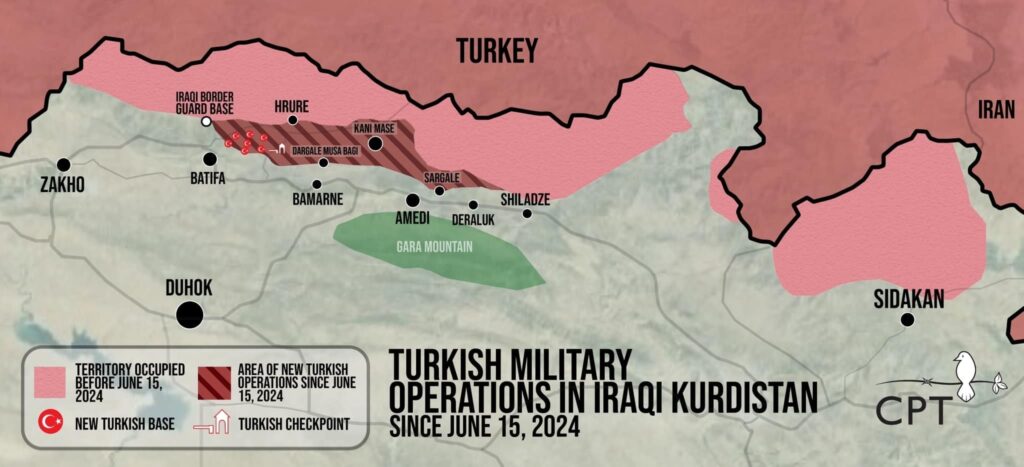
L’armée turque agit sans pitié, en particulier contre la population civile de la région. Des centaines de villages sont actuellement sous le feu. Selon des témoins oculaires, l’armée turque allume délibérément des incendies et lance des attaques répétées à l’artillerie et au mortier. Certains villages de la région de Metîna ont été évacués sous la menace de frappes aériennes s’ils n’étaient pas évacués dans les 24 heures. La stratégie de l’armée turque consistant à brûler les villages et les forêts rappelle les tactiques utilisées dans les années 1990 contre le mouvement de liberté kurde dans le nord du Kurdistan. Au cours de ces années, l’État turc a dépeuplé et brûlé plus de 4 000 villages kurdes afin de priver les guérilleros de leur base et du soutien de la population. Il semble que l’armée turque tente la même stratégie au Kurdistan du
Mercenaires de Daesh déployés aux côtés de l’armée turque
Alors que le Mouvement pour la liberté du peuple kurde a souligné à plusieurs reprises que la Turquie déployait des mercenaires islamistes des zones occupées par la Turquie en Syrie dans ses opérations militaires au Kurdistan du Sud, un porte-parole du Parti kurde du Sud a révélé la semaine dernière que plus de 300 mercenaires de l’Etat Islamique participaient à l’invasion du Kurdistan du Sud et du nord de l’Irak aux côtés des troupes turques. Sepi Media a simultanément publié les noms et les photos de 416 anciens membres qui auraient été formés par l’armée turque et le service de renseignement MIT à Afrin occupée au Rojava (au nord de la Syrie). Ce n’est pas la première fois que des djihadistes liés à Daesh combattent pour les intérêts turcs contre le PKK.
Collaboration du gouvernement central irakien et du PDK du clan Barzanî
L’armée turque reçoit un soutien apparent du Parti Démocratique du Kurdistan (PDK) dans certaines parties du Kurdistan du Sud, dirigé par le clan Barzanî. Ces dernières années, les forces Peshmerga du PDK ont à plusieurs reprises laissé l’armée turque libre de ses mouvements dans la région, établissant des points de contrôle pour limiter les mouvements de la guérilla. Dans l’opération actuelle, le PDK semble jouer un rôle encore plus important, les soldats turcs étant cachés dans les bases du PDK avant leur déploiement et les Peshmerga du PDK aidant à la mise en place des points de contrôle. Il semble également y avoir un accord avec le gouvernement central irakien, puisque Bagdad n’a pas protesté contre le fait qu’une armée étrangère établisse des points de contrôle et procède à des vérifications d’identité à l’intérieur du territoire irakien.
Le gouvernement turc a exercé des pressions diplomatiques et économiques sur l’Irak, notamment en menaçant de couper l’approvisionnement en eau de l’Euphrate et du Tigre et en proposant des projets économiques conjoints tels que la route de développement de l’Irak, une route commerciale de 1 200 kilomètres reliant le golfe de Bassorah à la frontière turque.
La guérilla et la population locale résistent à l’occupation
La guérilla résiste aux attaques des forces d’occupation et, malgré les succès de l’armée turque dans la capture de certaines collines, l’initiative sur le champ de bataille revient à la guérilla. Elle s’est adaptée aux mouvements de l’armée turque, utilisant la reconnaissance aérienne pour suivre les mouvements des troupes et attaquant les forces turques avec des unités mobiles. L’offensive turque ne se déroule pas sans heurts.
Ces derniers jours, les protestations de la population locale contre l’occupation par les forces turques se sont multipliées. À Behdinan, par exemple, les habitants ont bloqué la route entre Amediyê et Şeladizê pour protester contre l’offensive turque en cours et la collaboration du PDK. Certaines de ces manifestations ont été violemment dispersées par les forces Peshmerga du PDK.
L’urgence pour les mouvements de solidarité mondiale d’attirer l’attention sur l’invasion turque
dangers posés par cette offensive. Si l’armée turque progresse plus au sud et prend le contrôle de zones comme Garê, cela signifierait que près de 75 % de la province de Duhok serait sous contrôle turc. Actuellement, environ la moitié de la province est occupée par l’armée turque. Le gouverneur de Sireka, dans le Xakurke, a récemment déclaré à Rudaw, une agence de presse affiliée au PDK, que plus de 46 % de sa province n’était plus sous son contrôle, mais sous celui de la Turquie.
Il s’agit d’une occupation progressive du sud du Kurdistan et du nord de l’Irak. Il ne s’agit pas d’une opération mineure, mais d’une offensive stratégique majeure de l’armée turque. Une attaque sur Garê aurait des conséquences dévastatrices pour la population civile et porterait le conflit entre la guérilla et les forces turques à un niveau supérieur. Nous devons comprendre l’importance de ces actions militaires en cours et nous efforcer d’attirer l’attention sur elles en Europe. L’armée turque commet des crimes de guerre en bombardant des villages, en incendiant des forêts et en utilisant des armes interdites.
Nous devons utiliser nos moyens pour attirer l’attention sur cette question et veiller à ce que ceux qui soutiennent l’État turc, que ce soit en fournissant des technologies ou en finançant la guerre, soient tenus pour responsables.
Campagne Rise Up 4 Rojava
11 juillet 2024

